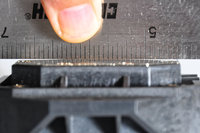- Joined
- May 18, 1997
- Messages
- 55,603
Reeven NAIA 240 All-In-One Liquid CPU Cooler Review
Today we are reviewing Reeven's first AIO cooler to come to market, the NAIA 240. It breaks with tradition a bit in that it is a refillable system rather than permanently closed as we see in many others. Let's see if its Frag-Harder lights and custom color liquid help it keep our overclocked Ryzen 7 cool.
Today we are reviewing Reeven's first AIO cooler to come to market, the NAIA 240. It breaks with tradition a bit in that it is a refillable system rather than permanently closed as we see in many others. Let's see if its Frag-Harder lights and custom color liquid help it keep our overclocked Ryzen 7 cool.
![[H]ard|Forum](/styles/hardforum/xenforo/logo_dark.png)

